Africa, often celebrated for its breathtaking landscapes, vibrant cultures, and incredible biodiversity, holds another treasure—its archaeological wonders. From the towering pyramids of Egypt to the enigmatic rock churches of Ethiopia, the continent is a vast museum of ancient civilizations that shaped human history. Join me as I journey through some of Africa’s most fascinating archaeological wonders, uncovering the past and revealing the stories etched in the sands of time.
Journey Through Time
Imagine stepping into a world where the whispers of ancient civilizations echo through the air, where every stone, artifact, and monument tells a story of a people who walked this earth long before us. This is the allure of Africa’s archaeological sites—places that are not just destinations but portals into the past.
The Timeless Majesty of Egypt
No discussion of Africa’s archaeological wonders can begin without Egypt, the land of the pharaohs. The Great Pyramids of Giza, standing proud against the backdrop of the endless desert, are the most iconic symbols of ancient Egyptian civilization. These colossal structures, built over 4,500 years ago, continue to baffle scientists and historians with their precision and grandeur.

One of the most intriguing aspects of the pyramids is the alignment of the Great Pyramid of Khufu with the cardinal points of the compass, which is almost perfectly aligned to true north. The pyramid’s construction involved around 2.3 million stone blocks, each weighing an average of 2.5 tons. The interior chambers, including the King’s Chamber, were built with precision so exact that it continues to challenge modern engineering.
But Egypt’s wonders go beyond the pyramids. The Valley of the Kings, where pharaohs like Tutankhamun were buried with their treasures, offers a glimpse into the afterlife beliefs of ancient Egyptians. The intricate carvings and vivid murals that adorn the tombs are not just art but a detailed guide to the journey of the soul in the afterlife. The tomb of Seti I, one of the most elaborately decorated, features a celestial ceiling painted with stars and constellations, symbolizing the eternal journey of the pharaoh’s soul.
Travel Tips for Egypt:
- Best Time to Visit: The cooler months from October to April are ideal for visiting Egypt. The temperatures are more bearable, making exploration more comfortable.
- Guided Tours: Hiring an Egyptologist guide is highly recommended. They offer deep insights into the history and significance of each site, enriching your experience.
- Explore Early: Start your day early to avoid the midday heat and crowds, especially at popular sites like the Pyramids of Giza.
- Entry Tickets: Some tombs in the Valley of the Kings require special tickets, such as Tutankhamun’s tomb. Purchase these in advance to ensure access.
The Mystical Rock-Hewn Churches of Lalibela
Leaving the sands of Egypt behind, we head south to the highlands of Ethiopia, where a different kind of wonder awaits. The rock-hewn churches of Lalibela, carved directly into the mountain rock, are a testament to faith and perseverance. These eleven medieval churches, built in the 12th century under the reign of King Lalibela, were intended to be a “New Jerusalem,” a holy city for Ethiopian Orthodox Christians.
What makes these churches unique is that they are not constructed from stones brought from elsewhere but are carved directly out of the living rock. Bet Giyorgis, the Church of Saint George, is the most famous of these, carved in the shape of a Greek cross. The church is connected to the other churches by a series of tunnels and trenches, creating an underground labyrinth. The architectural feat involved removing tons of rock, yet the churches have remained almost perfectly preserved for centuries.
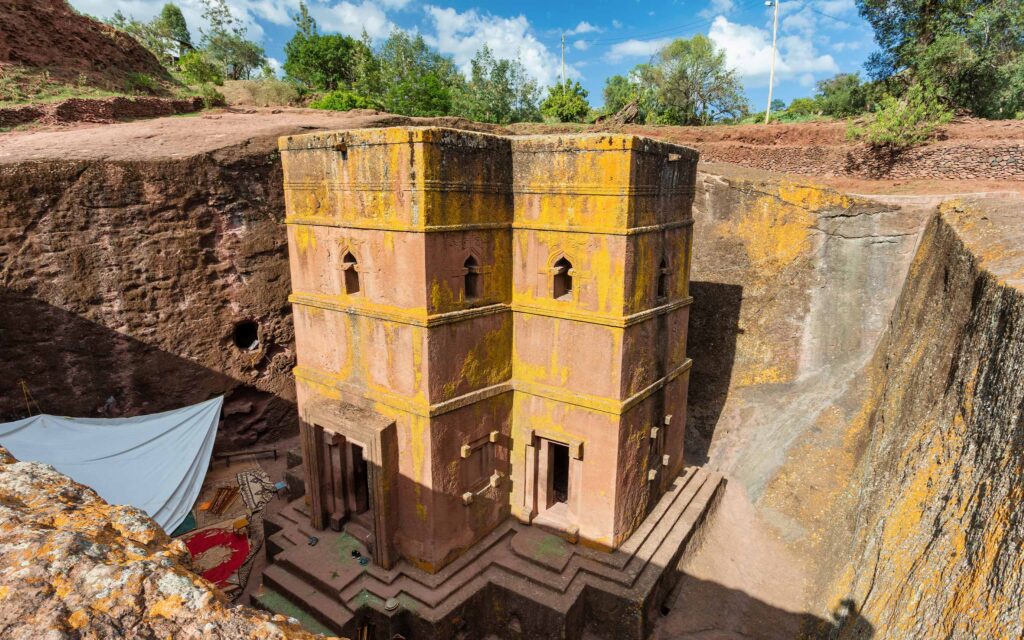
The beauty of Lalibela lies not just in its architecture but in its living history. Here, you don’t just visit the past—you experience it. The chants of priests, the smell of incense, and the sight of worshippers clad in white robes transport you to a time when faith was the cornerstone of daily life. The churches are still active places of worship, with priests often conducting services in the ancient Ge’ez language, a remnant of Ethiopia’s rich spiritual heritage.
Travel Tips for Lalibela, Ethiopia:
- Altitude Acclimatization: Lalibela is located at over 2,500 meters above sea level. Spend a day or two acclimatizing to avoid altitude sickness.
- Festival Visits: Consider timing your visit to coincide with religious festivals like Genna (Ethiopian Christmas) or Timkat (Epiphany), when the churches are most vibrant with activities and rituals.
- Footwear: Be prepared to remove your shoes before entering the churches. Carry a bag to store them, and wear socks to protect your feet from the hot ground.
- Photography: While photography is allowed, always ask for permission before taking pictures, especially of people and during religious ceremonies.
The Ancient Cities of the Sahara
Venturing west, we arrive at the edge of the Sahara Desert, where the remnants of powerful ancient cities lie buried beneath the sands. In Mali, the city of Timbuktu, once a thriving center of learning and trade, still holds the allure of its golden age. Known as the “City of 333 Saints,” Timbuktu was a hub of Islamic scholarship, home to thousands of manuscripts on subjects ranging from astronomy to poetry.
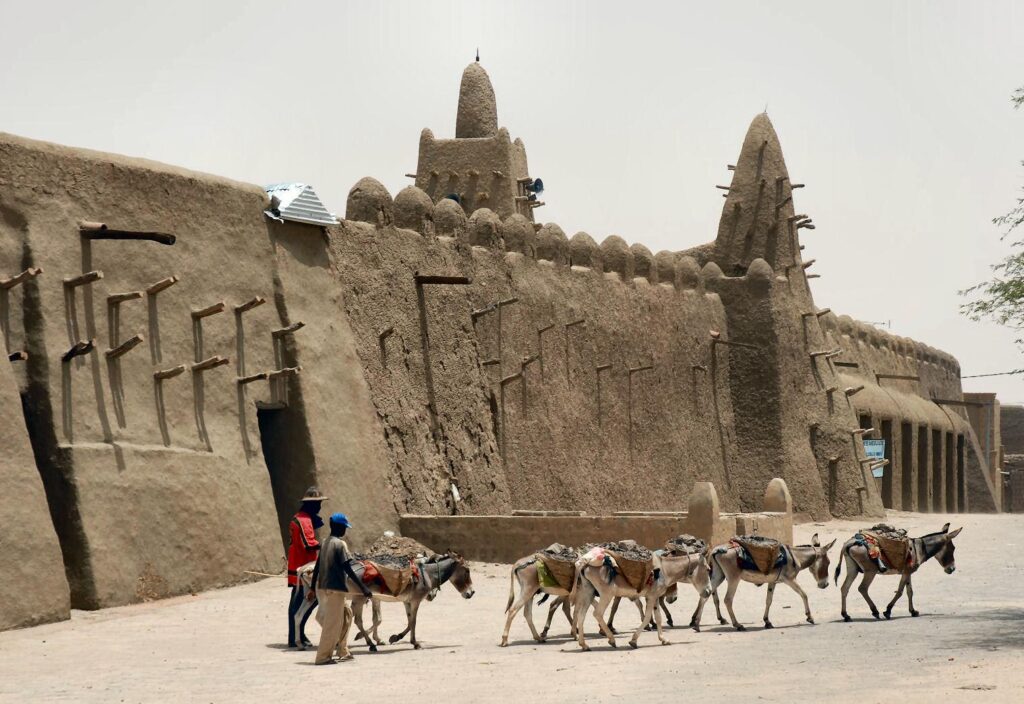
One of Timbuktu’s most remarkable features is its libraries, which still house thousands of manuscripts despite centuries of decay, conflict, and natural disasters. The Ahmed Baba Institute, named after one of Timbuktu’s most famous scholars, is a repository for these ancient texts, many of which are written in Arabic, and some in local languages, reflecting the city’s role as a melting pot of cultures and ideas.
Further east, in Sudan, lies the ancient city of Meroë, the capital of the Kingdom of Kush. Meroë is home to over 200 pyramids, smaller but no less impressive than their Egyptian counterparts. These pyramids, built between 300 BC and AD 300, are the final resting places of the Kushite kings and queens, who ruled a powerful and wealthy civilization that rivaled Egypt in its prime.
What sets Meroë apart is the unique style of its pyramids, which are steeper and narrower than those of Egypt. The city also boasts large temple complexes, such as the Temple of Amun, where elaborate ceremonies were conducted to honor the gods. The pyramids of Meroë are adorned with bas-reliefs that depict the kings and queens of Kush, as well as their interactions with deities. The presence of these pyramids in such numbers testifies to the city’s significance as a center of power and religious life in ancient Nubia.
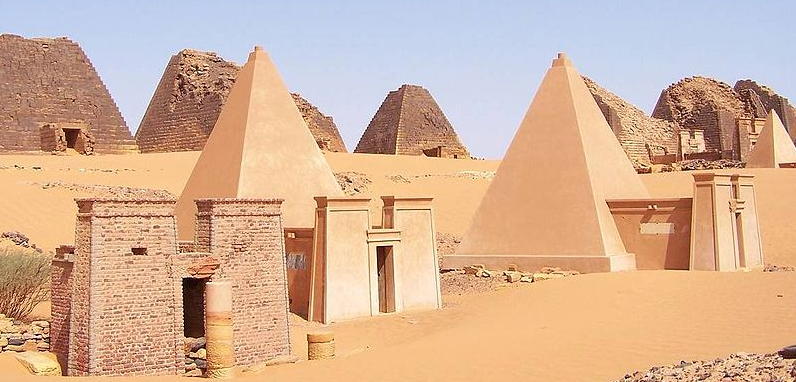
Travel Tips for Timbuktu, Mali
- Security Considerations: Timbuktu is in a region that has experienced instability. Check the current security situation and consider traveling with a reputable tour operator that specializes in the region.
- Cultural Sensitivity: Timbuktu is a conservative Muslim city. Dress modestly and respect local customs, particularly during prayer times.
- Guided Tours: Local guides can provide access to private libraries and share the rich history of the city’s manuscripts, enhancing your visit.
Travel Tips for Meroë, Sudan
- Travel Permits: Some areas in Sudan require special travel permits, especially for visiting archaeological sites. Arrange these in advance.
- Heat Preparedness: The region around Meroë is extremely hot, particularly in the summer. Visit early in the morning and carry plenty of water, a hat, and sunscreen.
- Accommodation: Stay in one of the nearby desert camps for an authentic experience, and enjoy the stunning view of the pyramids at sunset or sunrise.
The Great Zimbabwe Ruins: A Lost Civilization
Continuing our journey south, we reach Zimbabwe, home to one of Africa’s most mysterious archaeological sites—Great Zimbabwe. This ancient city, built between the 11th and 15th centuries, was the capital of the Kingdom of Zimbabwe and the heart of a powerful trading empire. The city is best known for its massive stone walls, some of which are over five meters high and built without mortar.
Great Zimbabwe is unique for its construction technique known as dry stone masonry, where no mortar is used to hold the granite blocks together. The precision with which these blocks are stacked creates a stable structure that has withstood the test of time. The Great Enclosure, the largest structure at the site, includes a conical tower whose purpose remains unknown but is believed to have had a symbolic or ritualistic function.
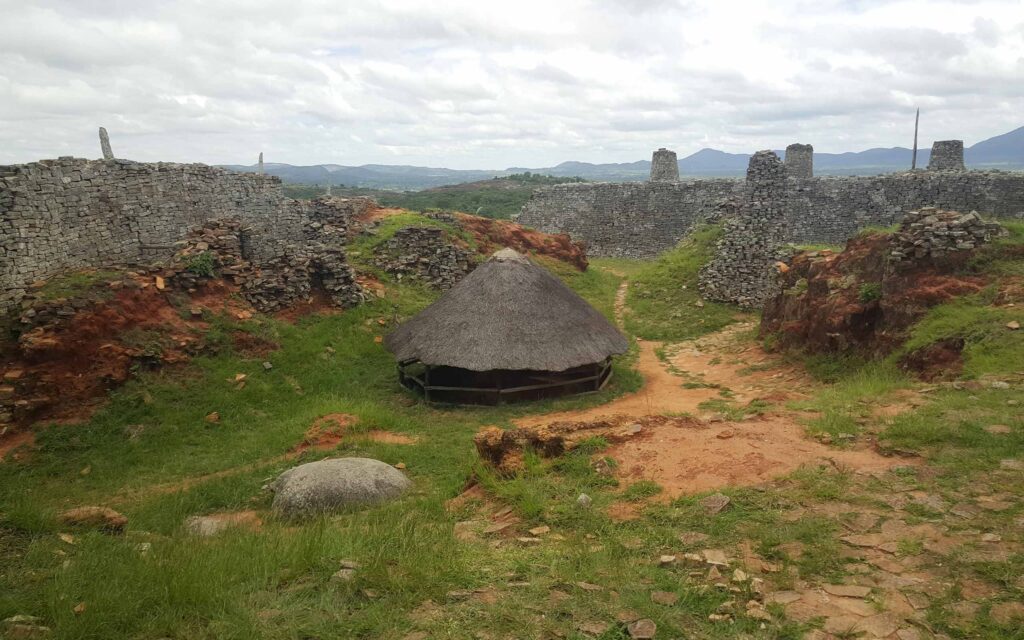
Great Zimbabwe was once a bustling city that controlled the trade of gold, ivory, and copper with distant regions, including the Swahili Coast and even China. The discovery of Chinese porcelain and Arab coins at the site underscores its role as a major trading hub. The city’s decline in the 15th century remains a subject of speculation, with theories ranging from overpopulation to environmental degradation.
Travel Tips for Great Zimbabwe
- Guide Services: Hiring a local guide is highly recommended to gain deeper insights into the history and significance of the site. They can also share local legends and stories that bring the ruins to life.
- Museum Visit: Don’t miss the on-site museum, which houses artifacts and provides context about the Great Zimbabwe civilization.
- Footwear: Wear comfortable walking shoes, as the site is extensive and involves a fair amount of walking, often over uneven ground.
- Best Time to Visit: The cooler months from May to August are ideal for visiting, as the temperatures are more pleasant for exploring.
The Stone Circles of Senegambia
Our final stop takes us to the border of Senegal and The Gambia, where one of Africa’s most intriguing archaeological wonders lies—the Stone Circles of Senegambia. These megalithic structures, spread over an area of more than 30,000 square kilometers, are believed to have been built between the 3rd century BC and the 16th century AD.
The stone circles, numbering over 1,000 individual sites, are made up of laterite pillars that vary in height, with some standing over two meters tall. The circles are often found in groups, suggesting they were part of a larger, organized society. The exact purpose of the stone circles remains a mystery, but they are thought to be burial sites, possibly for ancient kings or important community leaders.
What makes the stone circles of Senegambia unique is their sheer scale and the fact that they represent one of the largest concentrations of megalithic complexes in the world. Despite being lesser-known, these sites are recognized by UNESCO as a World Heritage Site, highlighting their global significance. Excavations have uncovered artifacts such as pottery, beads, and iron tools, offering clues about the people who constructed these enigmatic monuments.
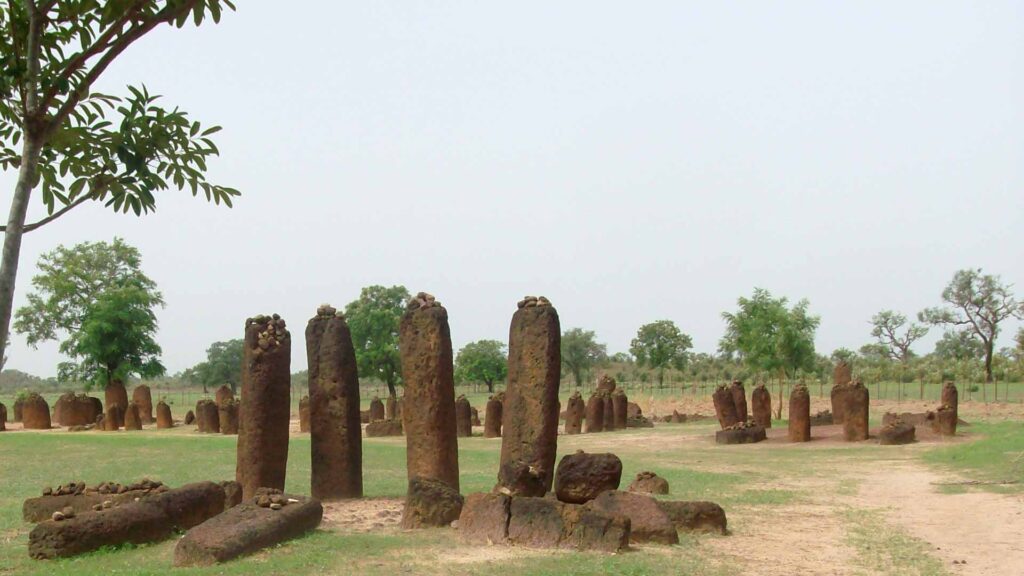
Travel Tips for the Stone Circles of Senegambia
- Transportation: The stone circles are located in remote areas, so hiring a car or joining a guided tour is essential for accessing the sites.
- Local Guides: Engage a local guide who can explain the significance of the stone circles and share fascinating stories about their history.
- Cultural Etiquette: Be respectful when visiting these sacred sites, especially if local communities are present for traditional ceremonies.
- Combine Visits: Consider combining your visit with a trip to nearby attractions, such as the River Gambia National Park, for a more comprehensive experience of the region.
Archaeological Wonders of Africa
Africa’s archaeological wonders are more than just tourist attractions—they are the keys to understanding the continent’s rich and diverse history. Each site, from the pyramids of Egypt to the stone circles of Senegambia, tells a story of human ingenuity, resilience, and connection to the land.
Exploring these ancient wonders is not just a journey through time, but also a journey into the heart of Africa, where the past is always present, shaping the lives of those who live here today. As you walk among these ruins, you can’t help but feel a deep respect for the civilizations that came before us, leaving behind legacies that continue to inspire awe and wonder.
So, are you ready to uncover the past?














